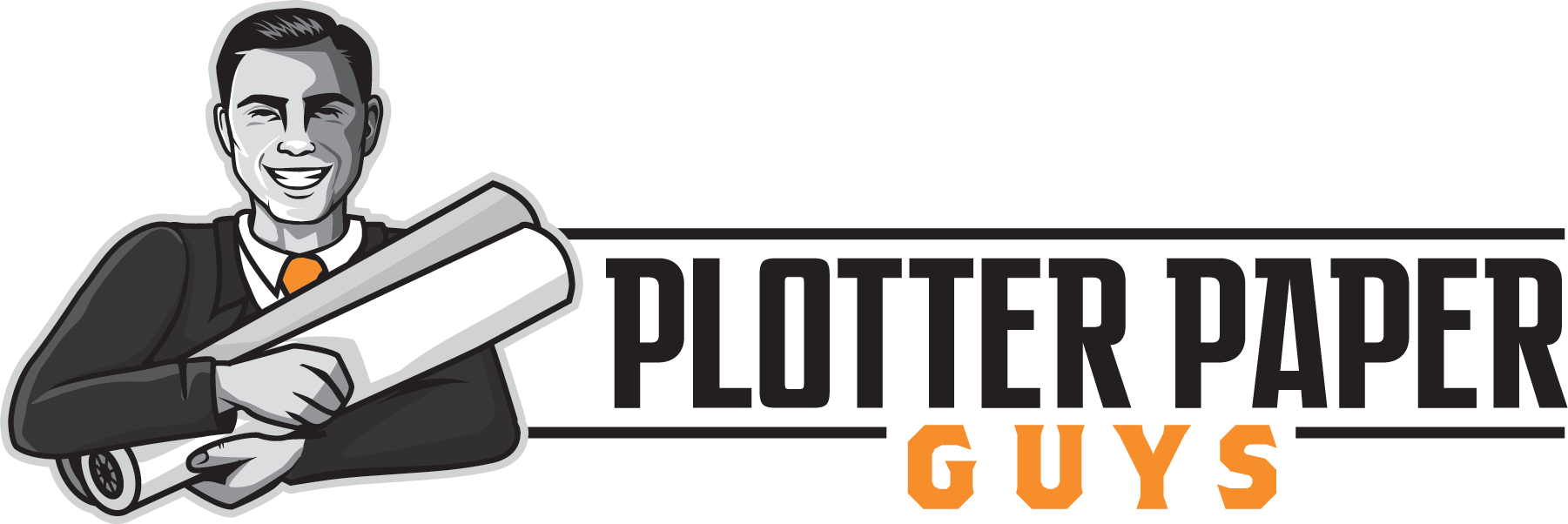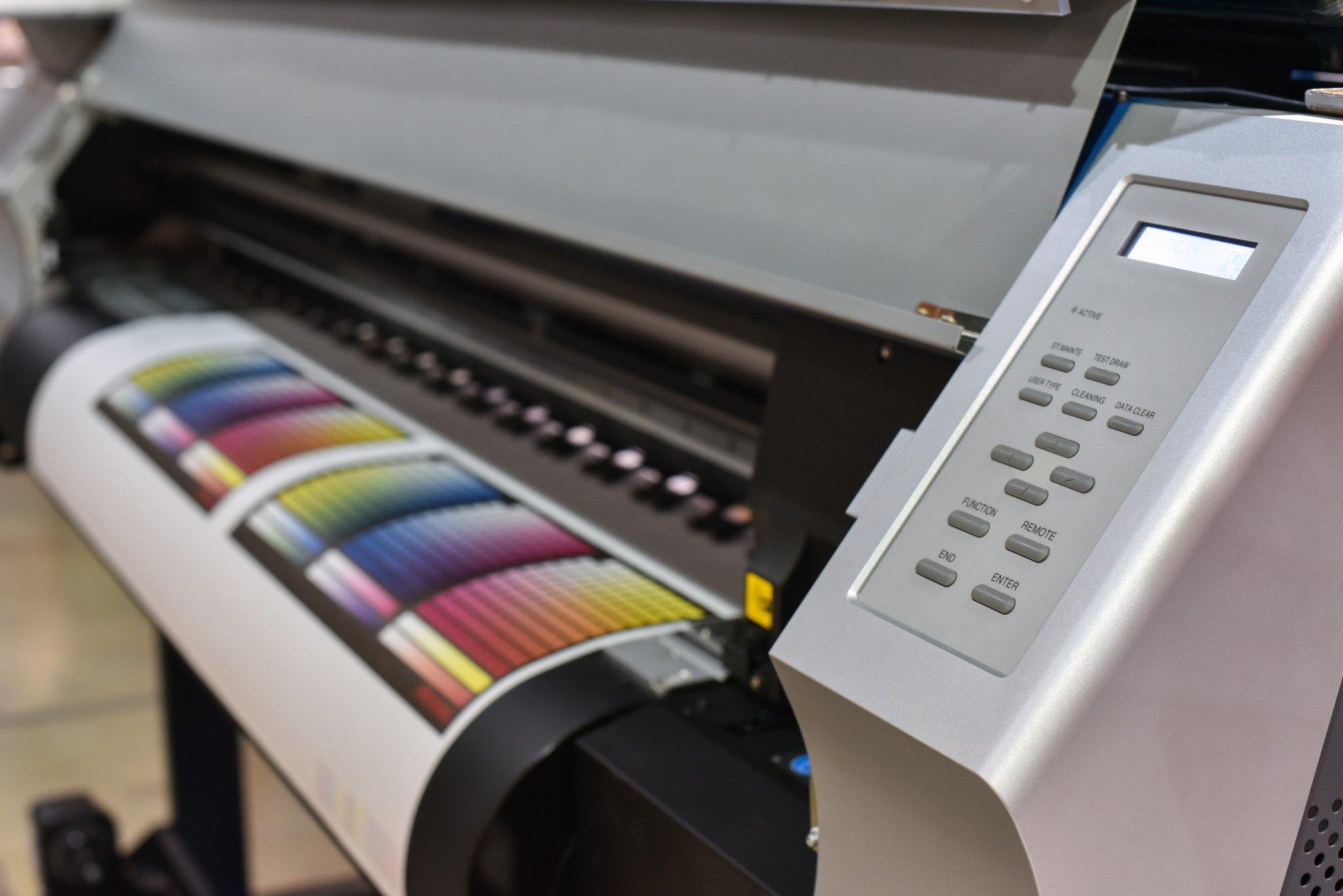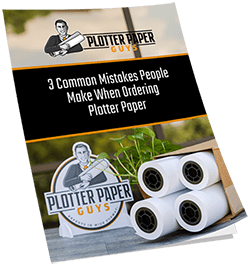According to reports, the large format printer market is expected to reach $11.4 billion by 2025. This can be attributed to increased demand for large format printing, and therefore large format printers.
If you own a wide-format printer and are looking to print your own projects, how do you know which paper is best for the job? Your wide-format paper can make or break a project, so you want to aim for a high-quality paper roll.
This article will cover what large-format printer paper is all about. We’ll cover everything from wide format inkjet printers to high-quality plotter paper. If this grabs your interest, keep reading!
What Is a Wide Format Inkjet Printer?
A wide-format printer, also called a large-format printer, is a printer that prints onto large-scaled paper. The width of this paper can range from anything between 2 ft to more than 15 ft.
Large-format printers are a type of inkjet printer to print banners, trade show graphics, murals, architectural drawings, construction plans, wallpaper, backdrops for media sets, and other large-format signage.
Wide-format printers are often mistakenly referred to as “plotter” printers, which is actually incorrect. Plotters typically create detailed continuous line art, which traditional inkjet printers can’t generate. Instead, inkjet format printers create those lines from individual dots.
Inkjet printers receive the output file data in a format like TIFF or PDF, while plotter printers receive the output information in a format similar to a vector graphic such as SCG, WMF, and CDR.
How Large Can an Epson Printer Print?
How large you’re able to print is largely dependent on the printer itself. For example, printers such as the Epson Surecolor SC-T3400 Series, a professional, entry-level large-format technical printer, can print up to 24″, whereas the Epson Surecolor SC-T5100M can print up to 36″.
Typically Epson printers can print a range of the following sizes:
- A4 (21.0×29.7 cm)
- A3 (29.7×42.0 cm)
- A3+
- A2 (42.0×59.4cm)
- A2+
- A1 (59.4×84.1cm)
- A0 (84.1×118.9cm)
- B0 (102.8×145.6cm)
- 17″ (43.2 cm) roll
- 24″ (61.0 cm) roll
- 36″ (91.4 cm) roll
- 44″ (111.8 cm) roll
- 64″ (162.6cm) roll
What are the Best Which Paper Is Best for Epson Large Format Printers to Use for Large-Sized Detailed Documents?
To print large-sized detailed documents, you’ll be looking at an inkjet rather than a laser printer. You’ll also want to select a color printer instead of black and white. This is because color laser printers have a limited color gamut and aren’t able to reproduce particular colors like an inkjet would be able to. Your printer will also need to be able to accept large file formats such as TIFF and PDF. Unfortunately, JPG and PNG formats often have conversion issues when it comes to color and sizing.
Which Paper Is Best for Epson Large Format Printers?
Epson has a wide range when it comes to paper for their wide-format inkjet printers, but how do you select the right one? Let’s take a brief look at some of the papers available to you for your large-format printers.
Graphic and Signage Paper
Here you’re looking at Singleweight Matte Paper as one available option. This paper can be used for promotional pieces, indoor signage, proofs, and posters. It can also be laminated for a glossy finish. Additionally, this paper is compatible with both pigment ink and dye. Finally, this paper is also available in “doubleweight” (heavyweight).
Also available for outdoor signage is our inkjet banner. Plotter Paper Guys’ 15 mil Matte Blockout Scrim Vinyl is an ideal solution for outdoor signage applications. Our 36″ X 60′ banners set the standard for ink quality and are guaranteed to provide the ‘wow’ factor you are looking for in wide format banner material, like polypropylene, scrim vinyl, adhesive vinyl, grey back roll up and solvent gloss.
Photographic Paper
There is a wide range when it comes to photographic paper. You have the choice of a range of finish: gloss, satin, pearl, etc., and it i s available in rolls and sheets. With photographic paper, your weights (thicknesses) can range from 165g/m² through to 325g/m². Typically, 8mil and 10mil photo papers are considered “standard”.
Production Media for Inkjet
Available in rolls or custom sheets, this category covers production photo paper in gloss or satin, and uncoated or ultra bright bond paper. Also available in this category is coated paper, the top-of-the-range plotter paper for CAD, GIS, graphics, and business presentations. This paper is specially developed for CAD and GIS inkjet plotting with either dye or pigment-based ink and has a quick drying time.
Proofing Paper
We suggest using any economical option that makes sense for you, cost-wise. Remember, proofs are basically a test-print for you to review and approve, before running the final print on a higher quality material.
When To Choose Rolls vs. Sheets
This can sometimes be a difficult decision because each comes with its own pros and cons. Let’s discuss.
Sheets
- Sheets come pre-cut to size and ready to be fed into the printer, whereas rolls will require cutting at some point during the process.
- With cut sheets, your pages are practically identical.
- Thinner roll paper can come off the printer with a curl, whereas sheets are generally flat every time.
Rolls
- Rolls are the better choice for lamination, as many laminator machines are built to accommodate rolls.
- Roll printing can be more productive when printing multiple prints to a large format printer than sheet-fed printing.
- Roll printing can better accommodate very long panoramas.
- Roll paper can be cut to the required size.
Choosing the Best Paper for Your Project
Choosing the correct paper for your project is essential, so it’s vital to look for high-quality suppliers so you can ensure you’re getting the best paper available. With all this information, you should feel more confident choosing the correct paper for your wide format inkjet printer project. If you’re looking for high-quality engineering paper and film, have a look in our shop for the best options available.




